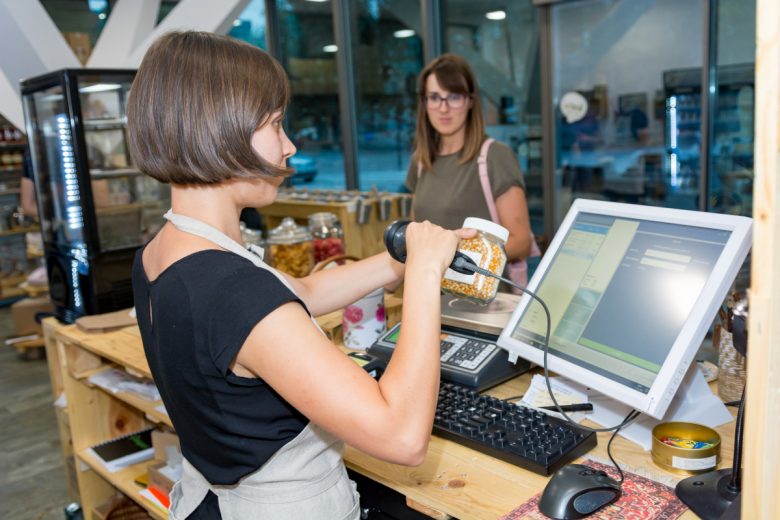Entrepreneurs launch their businesses as a result of a need they’ve recognized in the market. They often establish their operations, build a customer base, and make a profit before they think about the type of business model that aligns best with their company. This is because as businesses grow, their owners will inevitably stop to reflect on what’s working and what isn’t to identify areas of improvement to ensure sustainability. What they’re unconsciously doing is further defining their business model.
A business model is not only how your company makes and sells a product or service but how it can maximize profits by optimizing its value chain. Defining your business along these terms also helps clarify your value proposition to potential customers and create further growth by differentiating yourself from the competition.
In previous articles, we’ve looked at different business models including social media, peer-to-peer business model, and direct-to-consumer models. Here, we focus on the retail business model and how to enhance its efficiency to fine-tune your company strategy and meet its objectives.
What is The Retail Business Model?
The retail business model is a type of business model where companies sell their goods to customers from a fixed point of sale—whether that’s from a brick-and-mortar shop online store, or on social media. Online, a company can sell their goods on diverse platforms that have built-in commerce features such as Instagram shops.
The retail business model also contrasts with that of wholesale, where retail sales are direct to consumers and purchase volumes are low. This model also outsources manufacturing, storage, and distribution, which further contribute to standard company expenses. In this case, business owners must mark up their prices to cover these additional costs.
How Does The Retail Business Model Make Money?
The retail industry is highly competitive because there are countless companies offering the same products and services. This is because the nature of goods sold are mostly considered essentials which, as we will look at in more detail later, include groceries, banking, and gas.
Retail model business owners can increase revenue by brainstorming ways to differentiate their company’s offerings to attract customers. For example, you could create a retail destination such as a bookstore, where you can enjoy a cup of coffee while sampling different reads.
Besides offering in-store experiences, retail business owners can also enhance their income by managing their expenses. You can do this by hiring conservatively to maintain staff costs and investing in assets that generate income.
Another way that retail businesses make money is by managing inventory. Too much of it means high storage costs and less cash flow while with too little, you risk running out of something and customers going elsewhere to get it.
Encourage repeat buying by building customer relationships. Some ways to do this include incentives such as loyalty points and discounts for members.
If your business has the budget for it, you can also consider cost-effective advertising such as promoting your products in catalogs, email, and SMS marketing.
Examples of the Retail Business Model
Although most retailers offer their products and services from a physical store, more and more are selling goods online. Consumers often prefer the convenience this offers, as they not only save gas money but time as well.
Here are some examples of businesses based on the retail model:
- Groceries stores. Because they offer non-durable and durable goods, they are sensitive to price fluctuations.
- Furniture and appliances. Examples include Home Depot and Costco.
- Clothing stores. Macy’s, Nordstrom, and Nike are also some companies that use the retail model.
- Services such as banking, travel, pharmacies, and real estate. Examples include establishments such as JPMorgan Chase Bank, Intrepid Travel, CVS Pharmacy, and RE/MAX real estate.
- Gas stations. Shell, Exxon, and BP also fall under this model, and similar to grocery stores, this retail category is also dependent on external factors such as oil prices.
Department stores such as Costco, Target, and Walmart fall into more than one of the above categories since they offer food, clothing, furniture, and appliances. However, because of the competitive nature of the retail business model, it makes more business sense, as a startup, to start in one category and specialize in it before expanding into other areas.
Potential Challenges of the Retail Business Model
Incorporating Technology
The first potential pitfall that your company may face is not being able to innovate fast enough, where you risk losing customers because your mode of operation is outdated. For example, not incorporating e-commerce as a sales method isolates customers who would prefer to stay at home or visit friends than have to come to your store.
A lack of online presence is also a missed opportunity to recognize trends and get to know your customer better through analytical software. Retail businesses can secure return business by becoming more customer-centric to maintain their loyalty. Some ways to ensure this happens includes making your product or services easily accessible by, for example, making your website and online store mobile friendly. Product consistency and following through on professional customer service with fast delivery times are also other ways of building a solid working relationship with your clients.
Not incorporating technology into your business to optimize processes, such as automating easy and repetitive tasks to increase efficiency, also places your company at a disadvantage. Having said this, make sure that the individuals that you do hire are digitally savvy because AI and the human factor are complementary.
Staffing
Another potential challenge is a staff turnover to the point where you’re not able to meet employee expectations. You can retain talented employees by creating room for growth within your organizational structure by giving individuals tasks of which they can take ownership. Upskilling staff through training is another way that you can incentivize employees while closing the skills gap in your workforce.
Conclusion
In summary, the retail business model is one where you sell your product or service—either traditionally or online—directly to customers. You can make money as a retail business owner by monitoring and closely controlling costs to retain income after having the added expense of outsourcing manufacturing, storage, and warehousing that this model requires.
We also looked at some examples of this model, and although the brands mentioned are established, they all started with the same entrepreneurial ambition that you have.
Finally, we investigated the obstacles that may arise, where adaptability becomes key to creating a sustainable retail business. Taking a look at these points will help you decide if this is a business model that would work for your business.













Pingback: Understanding the Wholesale Business Model - StartUp Mindset
Pingback: The Advantages and Disadvantages of the Ecommerce Business Model - StartUp Mindset
Pingback: Bricks-and-Clicks Enterprise Mannequin: Definition, Examples, Advantages, and Challenges - The Owl Report
Pingback: Brick-and Click Business Model: Definition, Examples, Benefits, and Challenges - StartUp Mindset
Pingback: Advantages and Disadvantages of the Brick-and-Mortar Business Model - StartUp Mindset
Pingback: What is the Retail Business Model and How Does it Work? – Joseph O'Dierno Buffalo